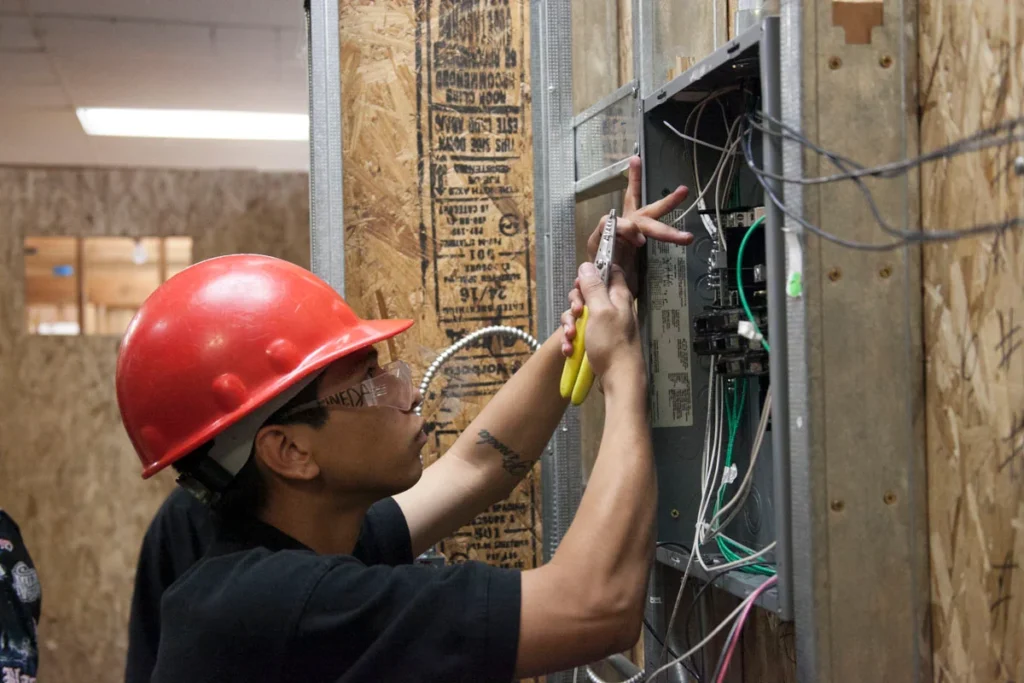How Long Is Trade School – A Guide To Understanding Its Duration!
Trade schools are getting more popular because there’s a need for skilled workers. These schools are attractive because they cost less and don’t take as long to finish as regular colleges.
Trade schools offer programs that last between three months to four years. For full-time students, it usually takes between six months to two years to complete. These schools teach skills for specific jobs, like plumbing or welding.
But what are they exactly? Here’s the complete guide on “how long is trade school” and many more about the programs.
What Is Trade School? – For Those Who Don’t Know!
Trade schools teach you how to do specific jobs after high school. They’re also called career schools or vocational schools. These schools teach you skills for jobs like fixing cars or working with computers.
The main fields offered are as follows:
- Carpentry
- Automotive maintenance
- HVAC
- Information technology
- Nursing
- Cosmetology
How Long Is Trade School? – Explore The Duration Here!

Trade school programs vary significantly from a few weeks to two years or more. Instead of getting a bachelor’s degree like regular college students, trade school students get a diploma or certificate when they finish their program.
The length of a trade school program depends on several factors, including the type of trade, the depth of specialisation, and the desired level of certification.
Duration Of Different Trade School Programs – Quick Overview!
1. Skilled Trades:
- HVAC Technology: Getting a certificate or diploma takes six months to a year. If you want an associate degree, it’ll take 18 months to 2 years.
- Electrical Technology: Getting a certificate or diploma takes six months to a year. If you choose an associate degree, it’ll take closer to 2 years.
- Auto Mechanics: It takes about one year. Some schools offer faster programs that take as little as nine months.
- Aircraft Mechanic and Maintenance: A certificate program takes 1.5 to 2 years, and two years for an associate degree.
- Welding Technology: Diploma programs take seven months to 1 year. Associate degrees take 16 to 24 months.
- Commercial Truck Driving: CDL training can take 1 to 3 months, depending on the license type and extra endorsements.
2. Health, Wellness, and More:
- Medical Assisting: Certificate programs can take a few months. Diploma programs take about one year, and associate degrees take 18 months to 2 years.
- Cosmetology: Programs last between 10 months and one year. Associate degrees take up to 2 years.
- Massage Therapy: Certificate programs take about nine months, but some are faster. Associate degrees take up to 2 years.
- Dental Assisting: Certificate and diploma programs take nine months to 1 year. Associate degrees take about two years.
- Culinary Arts: Certificate programs take six months to 1 year. Associate degrees take two years, and bachelor’s degrees take four years.
Factors Influencing Program Length – Must Know Them!

1. The Complexity of the Trade:
Trades that require a high level of technical expertise and specialisation often have longer program durations to ensure students receive thorough training.
2. Accreditation Requirements:
Some trades have specific accreditation or certification requirements that dictate the length of the program. Meeting these requirements may necessitate additional coursework or training hours.
3. Hands-On Training:
Trade schools emphasise hands-on learning to develop practical skills. Programs with extensive hands-on training components may have longer durations to allow students adequate time to master techniques and procedures.
4. Part-Time vs. Full-Time Enrollment:
Many trade schools offer flexible scheduling options, allowing students to enrol part-time. Part-time enrollment typically extends the duration of the program, whereas full-time enrollment enables students to complete their training more quickly.
What Are The Benefits Of Trade Schools Over Traditional Universities – Navigate The Advantages!

- Growth Opportunity: Trade schools are becoming more popular, with a predicted growth of 6% by 2026. This makes them attractive to new students.
- Flexibility: Trade school programs may need more or less time commitment than university courses. But you can often take part-time classes while working extra hours. Plus, after graduating, you can start working right away.
- Cost: Trade school programs are usually cheaper than university tuition fees. Some schools offer scholarships or financial aid. If you can’t afford a 4-year degree and know your field has vocational routes, trade school might be more affordable.
- Job Opportunities: Trade schools train you for specific jobs, like nursing assistants. This makes it easier to get hired because employers know your skills.
- Career Options: If you change your mind about your career, trade schools let you switch without redoing classes. There are also many job opportunities in trade fields, which is good for future career training.
- Hands-on Learning: Trade schools offer hands-on training, unlike universities. You’ll learn by doing, often shadowing professionals in the field. This helps you gain practical skills and see if you like the industry.
- Real-world Experience: You’ll experience what working in your chosen field is like. This is great if you’re interested in a specific industry, like restaurants, and want to see if it’s right for you.
Frequently Asked Questions:
1. What’s the easiest trade to learn?
Carpentry is the easiest one. It’s about building and fixing things with wood, like houses, furniture, and other wooden stuff. Carpenters use tools like saws, hammers, chisels, and drills to make their projects.
2. Is trade school more affordable than traditional university education?
Yes, trade school programs typically cost less than university tuition fees, making them a more affordable option for many students. Additionally, some trade schools offer scholarships or financial aid to further reduce costs.
3. Can I start working immediately after completing a trade school program?
Yes, one of the advantages of trade school is that you can start working right after completing your program. Trade schools focus on providing practical skills that prepare you for the workforce, allowing you to enter your chosen field sooner.
Final Words:
Trade schools offer a practical and affordable pathway to acquiring valuable skills and entering the workforce quickly. With flexible programs, hands-on learning experiences, and abundant job opportunities, trade schools provide an attractive alternative to traditional university education.
Whether pursuing a career in skilled trades or healthcare, trade schools empower individuals to achieve their professional goals efficiently and effectively.
Read:







